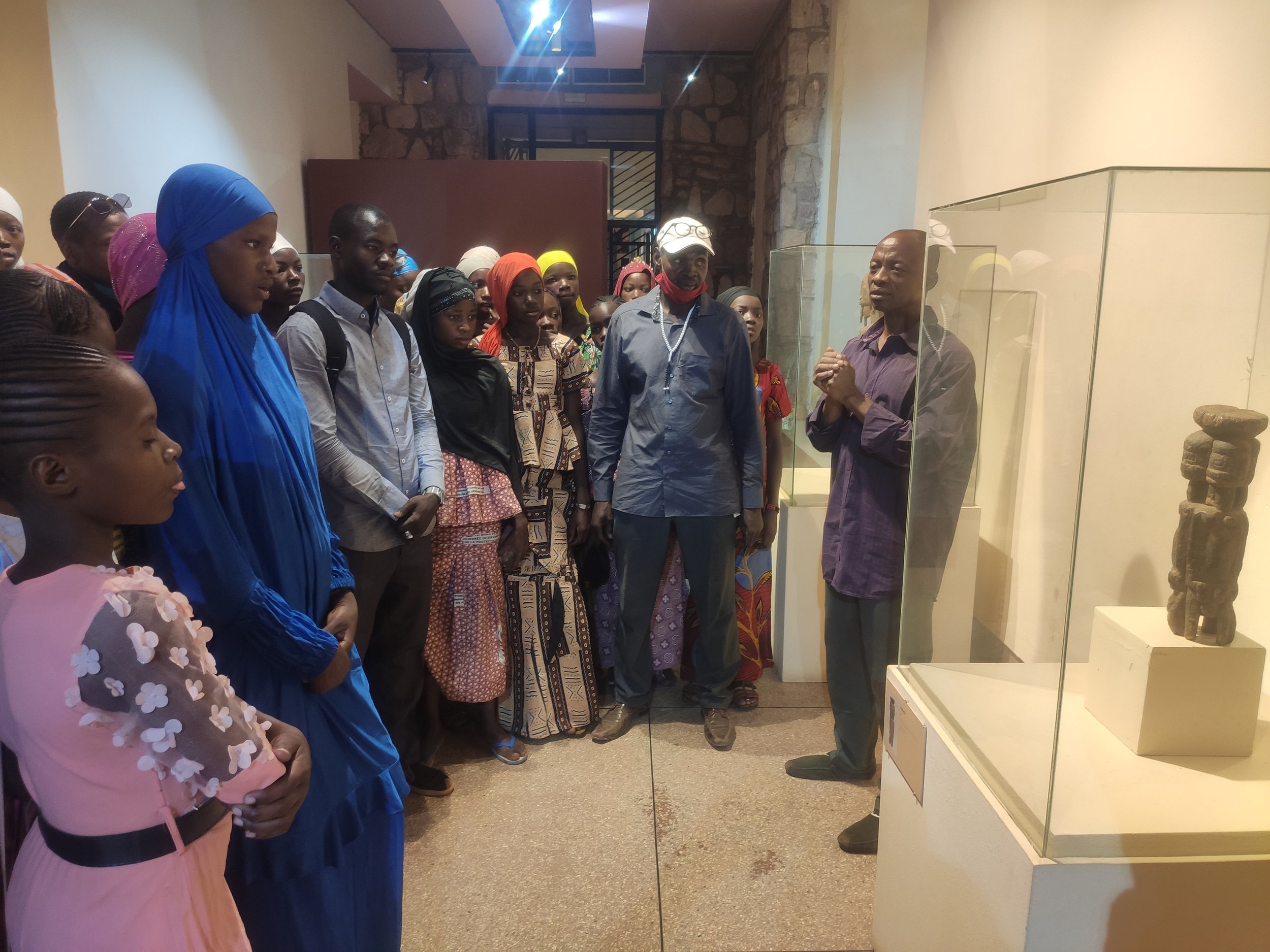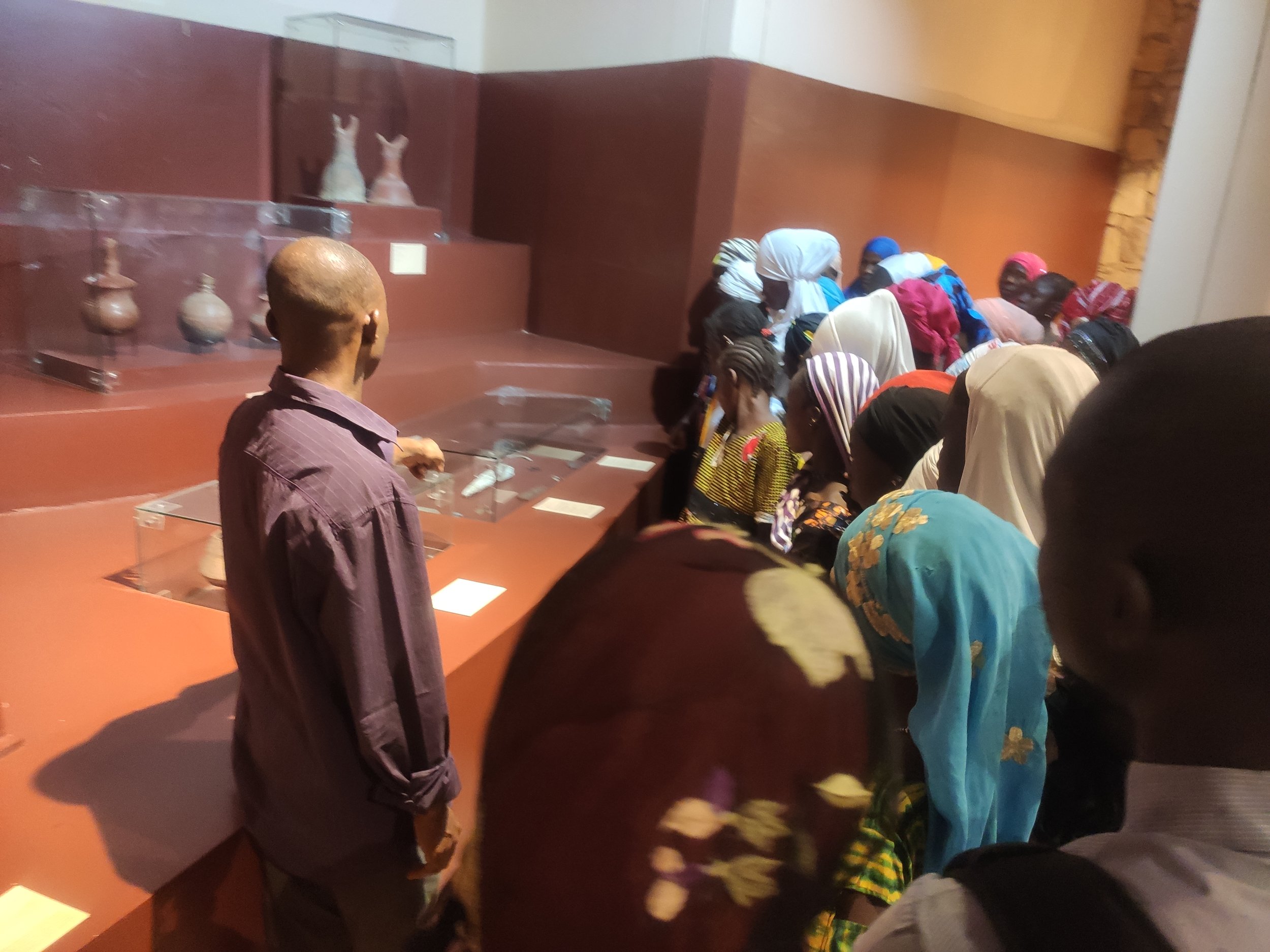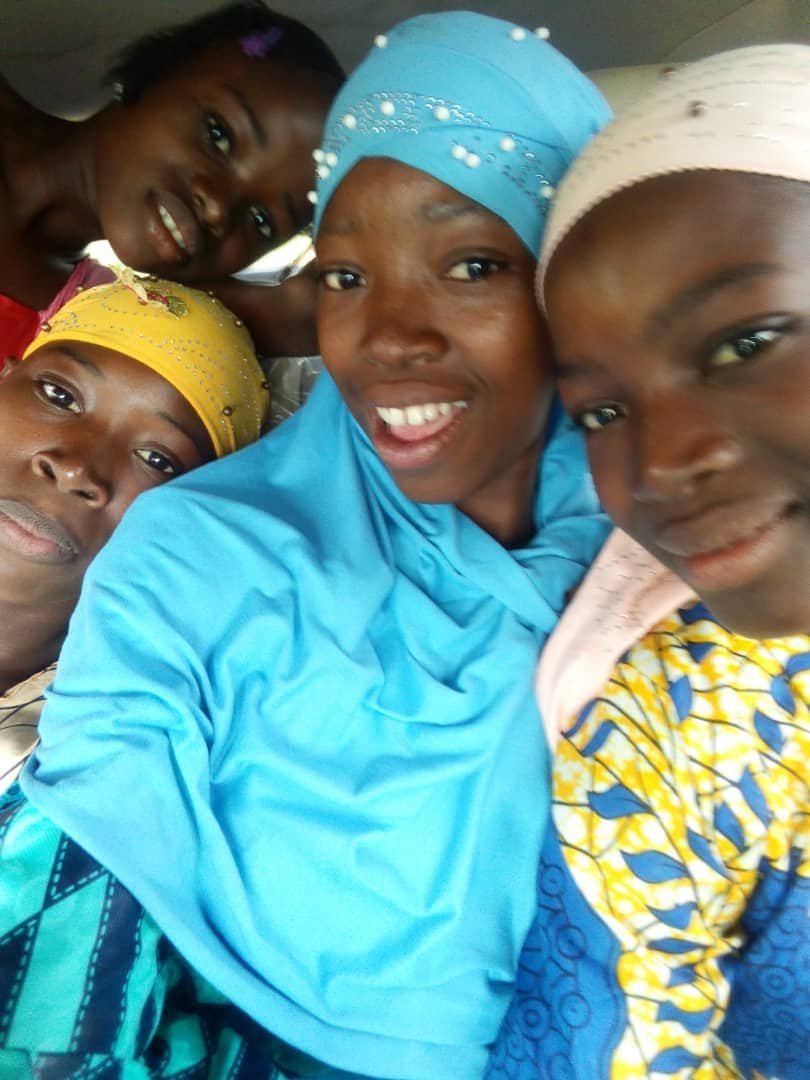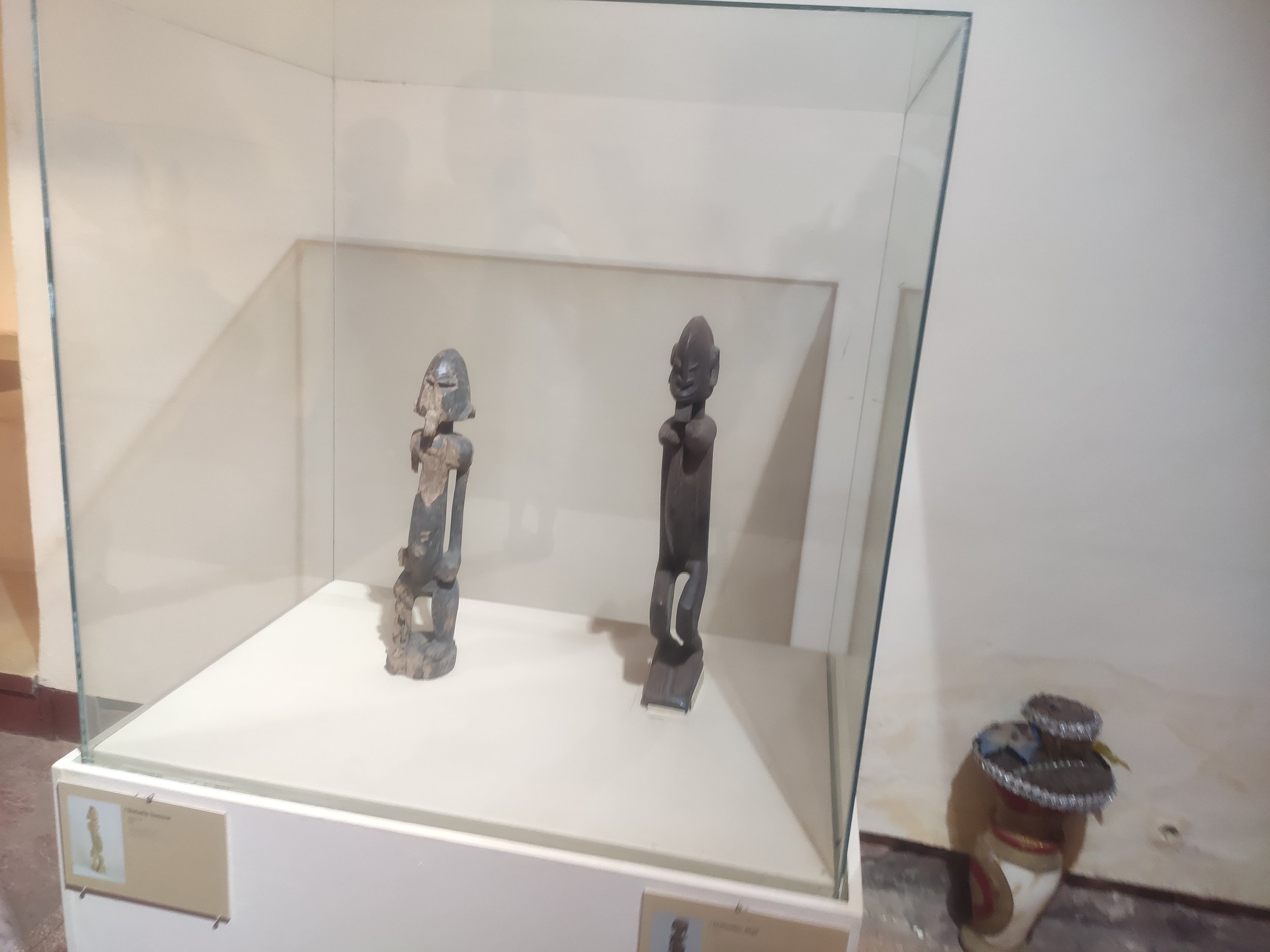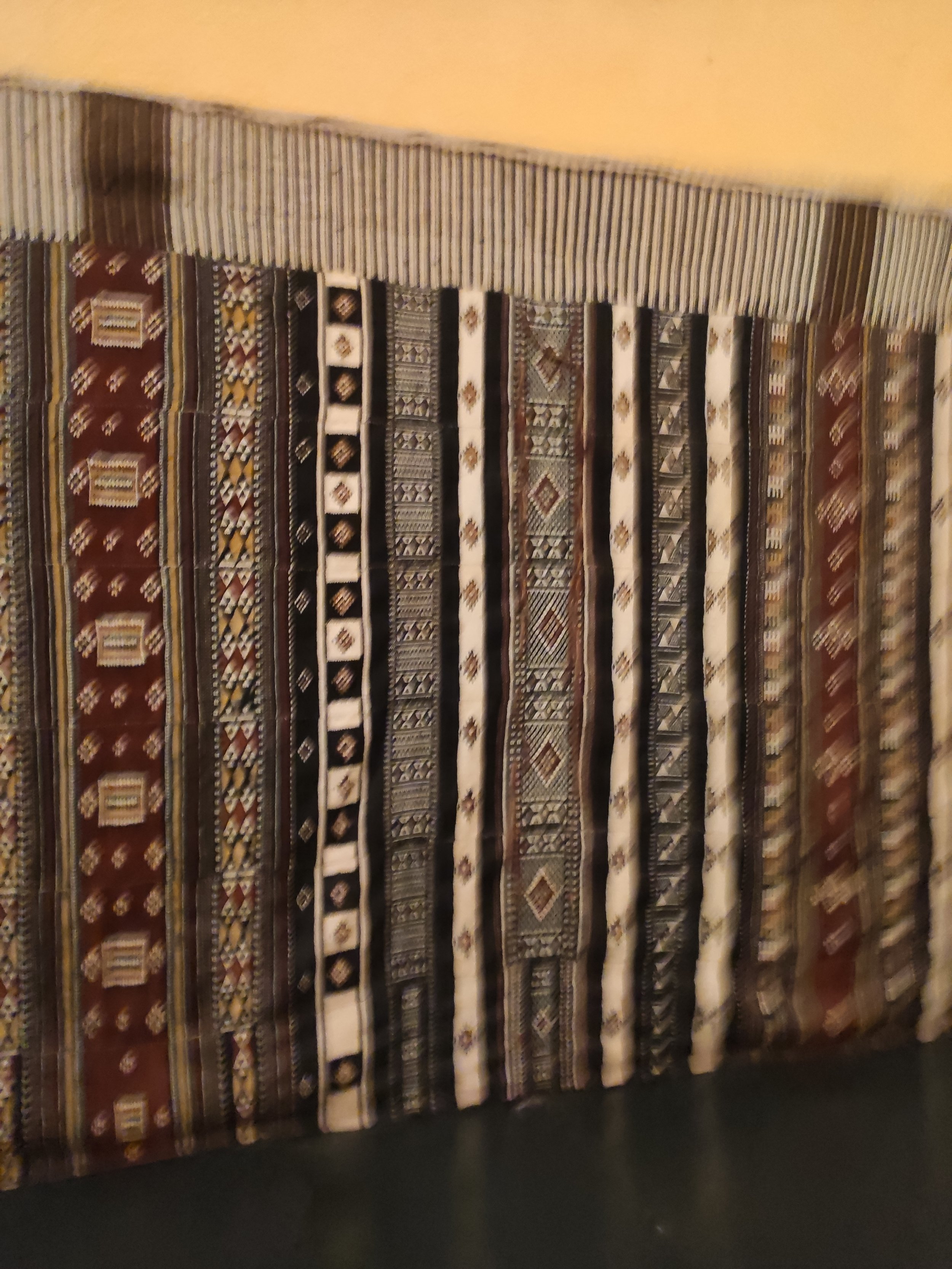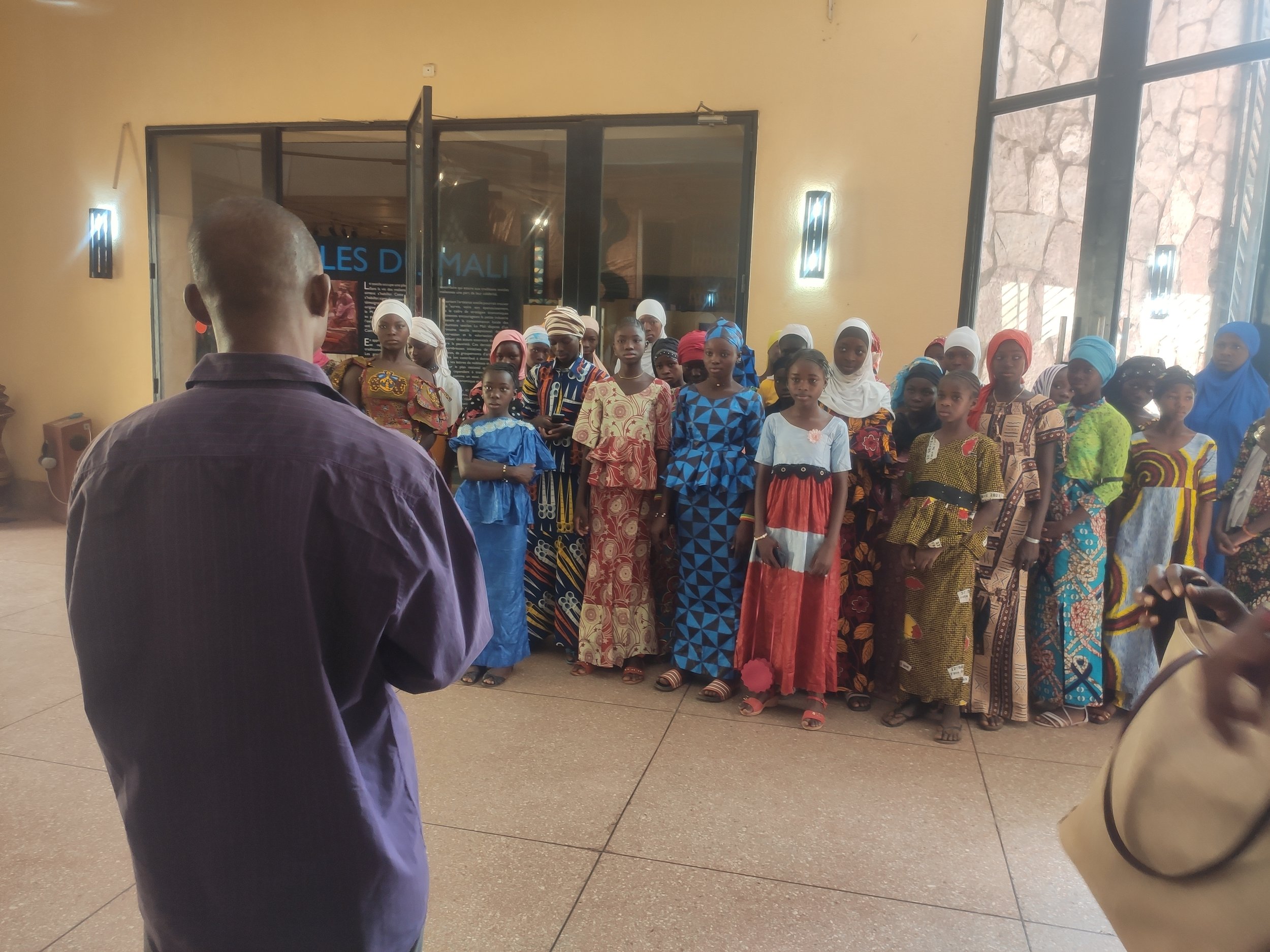By Hindaty Traore, Girls’ Project Manager
Our Girls’ Project does lots of serious work with the girls about leadership, study skills, and more. But occasionally, we need to celebrate! In April, we did just that – we celebrated our academically high-achieving girls by taking them on a field trip to the capitol city of Bamako. The girls visited the National Museum and the National Zoo. In this blog post, I want to share some fun from the museum portion of the trip.
As background, at the beginning of the school year we told girls in our 5 Girls Project villages that if they could maintain a 12 average all year (essentially a C+ or B-), they could come along on a fun field trip to the capitol. Our hope is that this inspires girls to study hard and push themselves to get better grades.
As the school year nears its end, we had 53 girls who qualified to attend. Girls who did not hit the required 12 score vowed to do so next year as they had to watch their peers climb into the bus to leave the village for the city! For more than 90% of our 53 girls, this would be their first trip to the capitol.
The visit began with several hours at the National Museum, a historical and archaeological treasure of the great empires of Mali. The museum is an ideal place to understand and appreciate the historical, prehistoric and archaeological treasure of the great empires of Mali and all her people, including the Dogon, Bambara, Malinké and more. In the museum you have very beautiful pieces of art, such as Dogon masks or the rich colored fabrics of the boubous.
A guide was there to explain everything that was in the museum. The girls, so amazed and curious, learned a lot of things, starting even with the existence the museum! They discovered for the very first time a lot of new things about Mali and their origin. We all felt great pride as we learned about our history and present-day culture.
But what did the girls think of the museum? During the trip I spoke with Hawa Touré who is 17 years old. She is in 9th grade at the Sue Taylor Middle School. Hawa said that her mother is Dogon (an ethnic group from Mali) but she did not know the story of her mother's origin. But thanks to the explanation of the guide at the museum, that Hawa was able to know the four great ancestors of the Dogon. The guide had shown the girls the four small statutes of the Dogon ancestors and told their story. Hawa was very moved to know the story because she wants to tell it to her mother.
According to Faoumata Samaké of Tim Gibson Middle School, she knew the name of the komo, a fetish that the old people told them about in the village. However, women are forbidden to see the komo. It is said that if a woman sees the komo, she dies. But at the museum, the guide explained that the komo in the museum was sold to the museum and they first removed everything that can kill women (gris-gris and others). Fatoumata was therefore reassured and understood how komo works. “To be able to discover other new things, I will study well to be sure I can come back,” she said.
Mary Samake is 16 years old and in the 9th grade at our Denik Middle School. Mary said, "This trip [from the village to Bamako] was very beautiful for me and it was not just a simple trip but a trip of discovering new things among so many cultural residues of our ancestors. And it was for me a place where you have to go to know lots of good things as a student and future teacher of history. Because I would like to become a history teacher to teach the history of my country and those of other countries to children. Like this, history will be transmitted from generation to generation and for the maintenance of our cultural values. At the museum, we were told that a country without history is a country without a future.”
The girls had studied some lessons on the biology and history of Mali but had never seen with their own eyes what a museum visit can provide, such as the various exhibitions on the prehistory of Mali, the customs, the instruments of music, the ritual objects of the different ethnic groups living in Mali. They saw the statuettes and images with their own eyes.
It was a day of discovery. We all found it very interesting and relaxing, and we enjoyed learning and sharing knowledge. Girls who live in the cities are more likely to see these things than those who are in the villages because those who are in the cities do outings with their schools and this helps to strengthen their learning capacity.
For our village girls, this trip expanded their world. It is thanks to the generous donors of Girls’ Project that our girls had this chance – thank you.
Stay tuned on my next blog post for stories from our time at the National Zoo!

